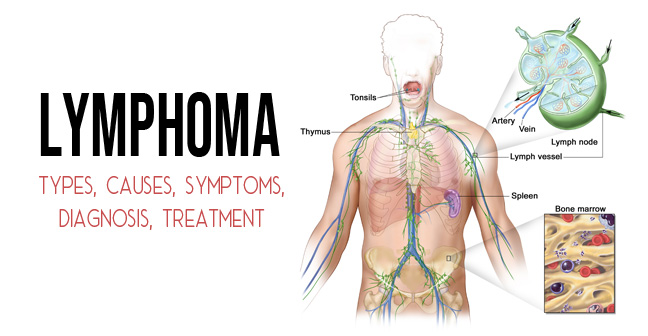
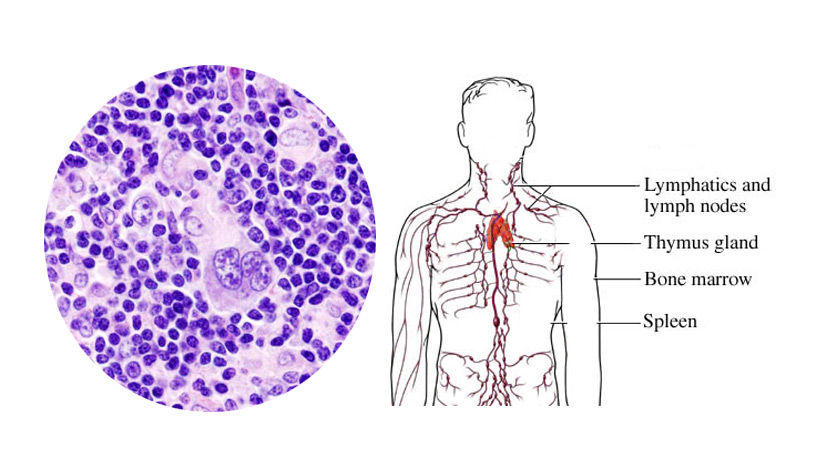
Cancer affecting the Lymphatic System/ lymph nodes of the body is known as Lymphoma. It is a type of blood cancer in which the cancer-causing abnormal cells target the bone marrow where they infect the lymphocytes (a type of white blood cells).
Lymphoma weakens the immune system of a human body because of the depleting number of white blood cells in the human body. This type of blood cancer is mostly diagnosed in the old age people (60+) or in the young adult age (20-40).
Although there are different types of lymphomas, the most recognizable forms of lymphomas are named as Hodgkin’s lymphoma and non-Hodgkin’s lymphoma.
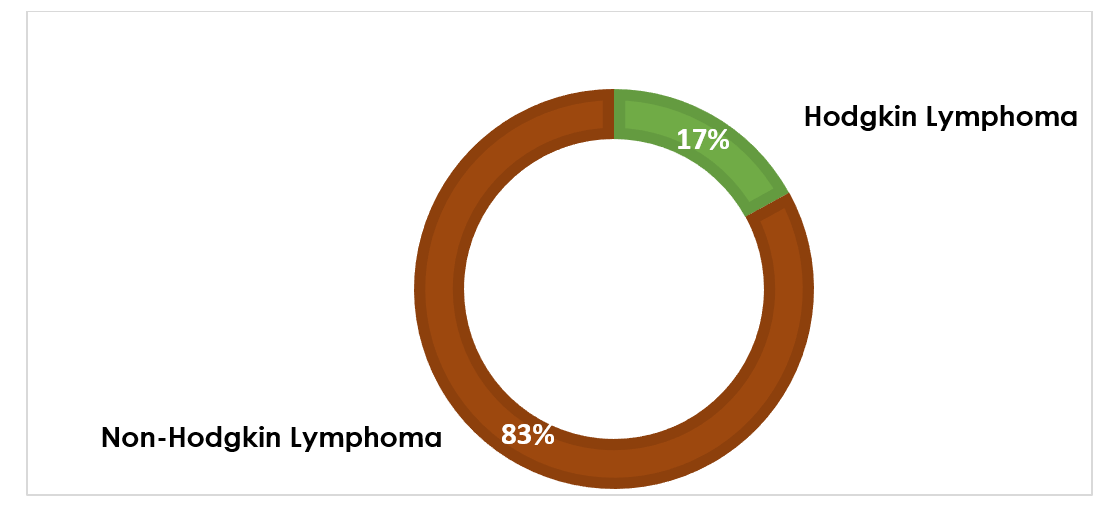
- Hodgkin’s Lymphoma
This disease is counted as the unusual types of the disease which involves Reed-Sternberg cells. Even Hodgkin’s lymphoma has six different subtypes where they all possess some unique properties, which can be observed under a microscope whereas World Health Organization (WHO) classification system has declared four types of classical Hodgkin’s lymphoma which are-
- Nodular Sclerosing
- Mixed Cellularity
- Lymphocyte Rich
- Lymphocyte depleted
- Non-Hodgkin’s Lymphomas
Unlike Hodgkin’s lymphomas, these are the common type of disease in young adults who do not involve Reed-Sternberg cells. Talking about types of Non-Hodgkin Lymphomas, there are 61 types of this disease. Well, this is quite difficult to detail every type of non-Hodgkin’s lymphoma as they are large in number and there are different treatment methods which are used for every kind of this disease.
So, the current standard classification which is defined by the World Health Organization (WHO) is based on its appearance that is analyzed under a microscope. It depends on mainly these points-
- Chromosomal characteristics of the lymphoma cells
- Their existence of individual proteins
- Whether it originated in B-cells or T-cells. Both the cells are defined below-
B-Cell Lymphomas
According to the data of U.S. about 85%% of non-Hodgkin’s lymphomas diagnosed there, are B-cell lymphomas. So, mainly, the Non-Hodgkin Lymphomas are originated from B-Cells. Going into more detail, the Diffuse large B-cell lymphoma or DLBCL is the most common subtypes of B-Cells. It is followed by primary mediastinal B-cell lymphoma an intravascular large B-cell lymphoma in which primary mediastinal B-cell lymphoma is usually easy to treat while intravascular large B-cell lymphoma is a rare one.
T-Cell Lymphomas
Unlike B-Cells, 15 % of non-Hodgkin’s lymphomas are a T-cell type. T-Cell Lymphomas also contain numerous subtypes, but most of them are rare. The largest subgroups of T-cell non-Hodgkin’s lymphomas is Precursor T-lymphoblastic lymphoma or leukaemia. It is considered as Leukaemia, according to the amount of bone marrow affected. Another large group after Precursor T-lymphoblastic is the peripheral T-cell lymphomas. This type of T cell includes most of the subtypes.
Causes and Risk Factors of Lymphomas
As we all know that the reason behind the origin of Lymphoma is the abnormal growth of the cancer cells in the lymphatic system. Most commonly it happens to target the sites like Lung, Liver, and Bone Marrow.
The rise of Lymphoma in the human body is supported by a number of risk factors like:
Weak Immune System: People with a weak immune system are more prone to get infected with cancer cells because of the deficit of White Blood Cells (WBC).
- Age: Most of the Lymphoma cases are diagnosed in people with 60 and above age and in the young adults.
- Chemicals: Some of the chemicals used in Agriculture are the cause behind Non-Hodgkin’s Lymphoma.
- Nuclear Radiation
- Bacterial and Viral Infections
- Diet and Obesity
- Hair Dye
- Family History of Lymphoma
Symptoms of Lymphoma
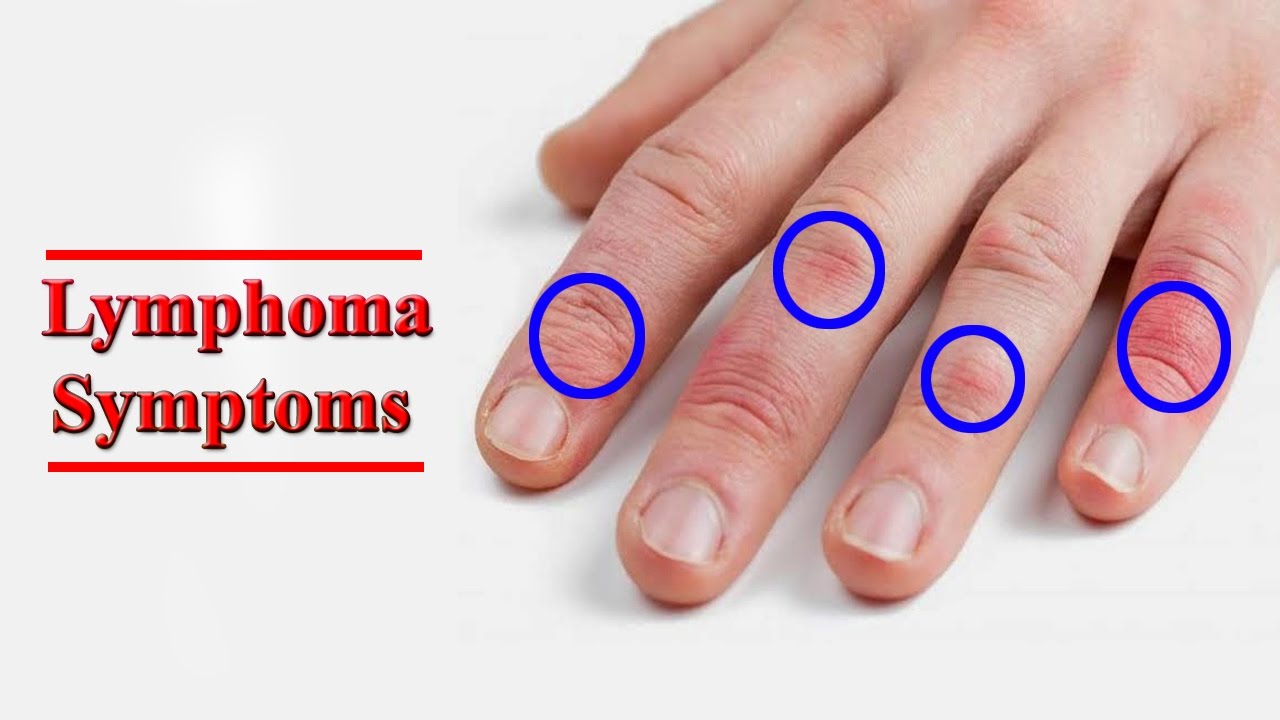
Reduce the chances of getting caught by the Lymphoma cells by eliminating all the above risk factors. If you fail to do so, then get ready to experience symptoms like:
- Swelling in Lymph Nodes present at Groin, Neck, Armpits, Abdomen.
- Fever (without infection)
- Night Sweats and Chills
- Coughing
- Breathing Problem
- Unintentional Weight Loss
- Pain
- Itching
- Fatigue and Tiredness
- Seizures
Note that these symptoms can vary according to the body health and immune system. Some people might experience no symptoms while some may suffer even more severe symptoms.
Diagnosis of Lymphoma
If you are facing any of the above symptoms, go for an immediate check-up. Don’t miss to take the past health history reports as it will be helpful for the doctors in diagnosing you. According to the patient’s health history and symptoms, the doctor can undergo a variety of tests like:
Blood Test: As Lymphoma affects the functioning of white blood cells, so in the blood test, the first thing which will be checked is the functionality and performance of blood cells and other body organs like kidney, liver, etc. The blood test is also helpful in determining the type of Lymphoma.
Biopsy: In Biopsy, the doctors take out a sample of tissue from the lump or mass swelling. Now, the pathologists will conduct various tests on the tissue to justify the stage of Lymphoma. Also, it will be helpful to check whether the cancer cells have influenced the other organs or not.
Imaging Test: When it comes to checking the secondarily infected organs of the body, Imaging Tests are the primary choice of the doctors as the imaging test gives the actual health report of the body organs. The Imaging Test includes methods like MRI, CT Scan, X-Ray, PET.
Treatment of Lymphoma
There are various treatment options available for Lymphoma, and it is treatable too. Doctors conclude about the treatment method according to the Detection test report.
Chemotherapy: This is an aggressive method in which drugs are given to the body to kill the cancer cells, but they may also harm the healthy cells of the body.
Radioimmunotherapy: In Radioimmunotherapy, high powered radioactive doses are given to the body in order to kill the cancerous B-cells and C-cells.
Steroids: Steroids are injected in the body to kill the cancer cells.
Radiation Therapy: In Radiation Therapy, small patches of cancer infected areas are taken and treated.
Stem Cell Transplantation: Stem Cell Transplantation is used to restore the damaged/ infected bone marrow.
Antibody Therapy: Antibody Therapy is the kind of therapy in which the synthetic antibodies are inserted in the bloodstreams to fight cancer agents.
Biologic Therapy: It is one of the most suggested methods for Lymphoma treatment. In Biologic Therapy, living microorganisms are inserted into the body to stimulate the immune system to eliminate the cancer cells.
Surgery: Surgery is also a good option to treat Lymphoma. Through the operation, the doctors remove cancer affects organs from the body.
Hope you are now well aware with the types of Lymphoma, its causes, treatment, symptoms, and diagnosis. Still, if you have any query, feel free to contact us via comments. Also, you can fill the contact form for a one-to-one conversation with our specialist. Don’t miss to read about the other types of Blood Cancer, especially about Leukemia.
You Must Know: Early Signs and Symptoms of Blood Cancer
Leave a reply


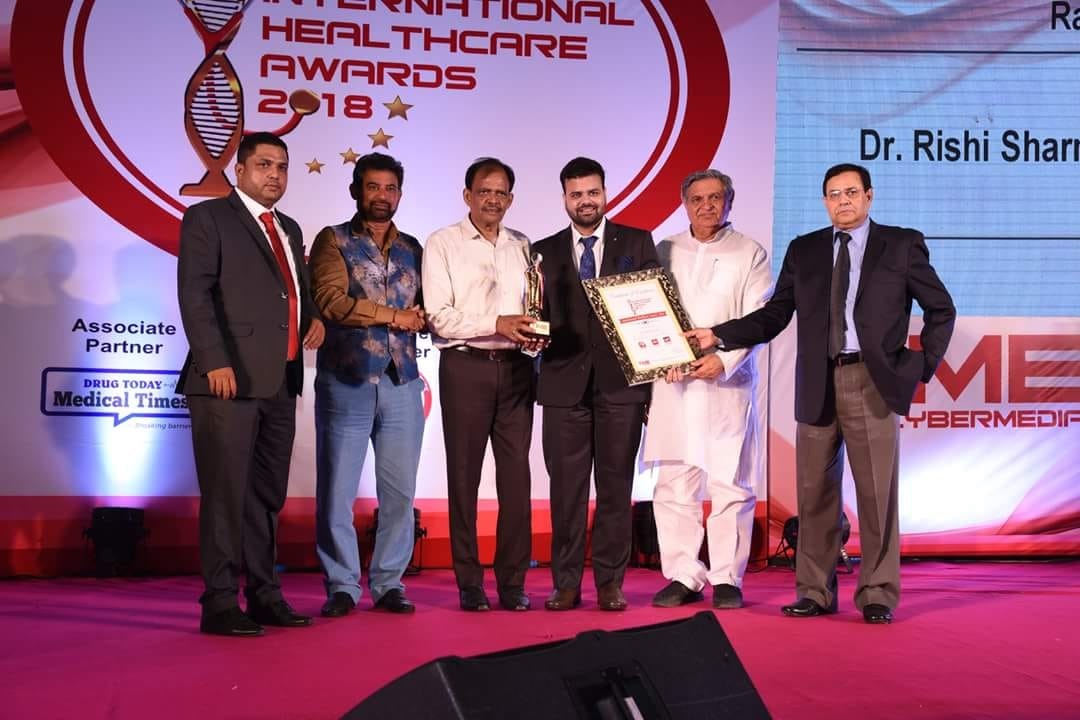

Hello Team,
My mother has been diaoganised with lymph node cancer in the right lower region of the neck and is in it’s fourth stage. She is 72 yrs old and has been advised chemotherapy to start with
by a leading cancer reaserch institute in Ahmedabad. We are to visit them today to take the final call.
Please advise on the same
Regards
ReplySandeep Chhetri
09898954588